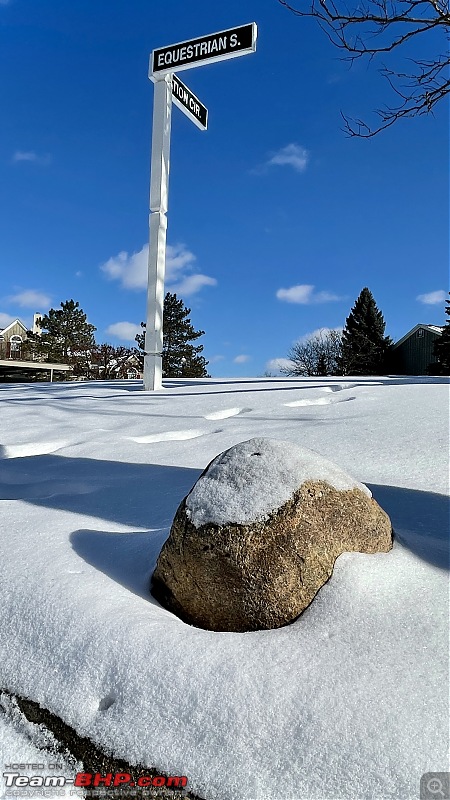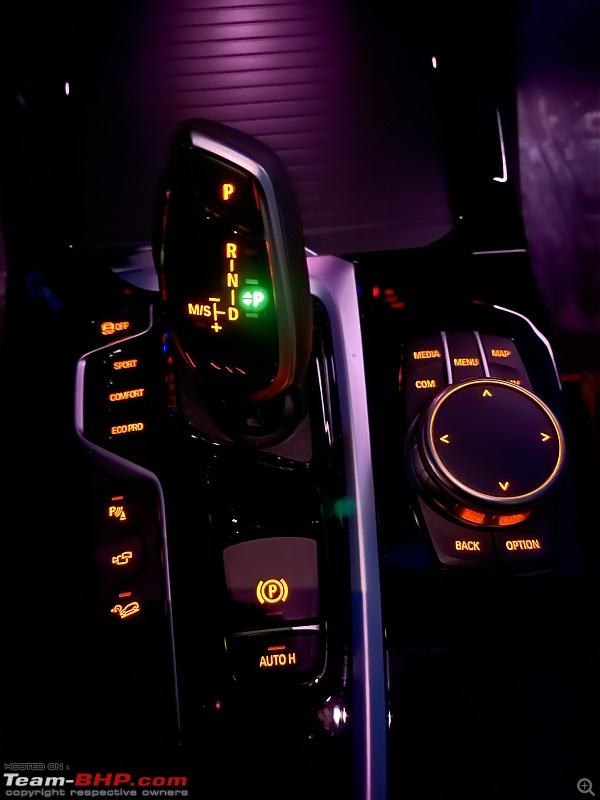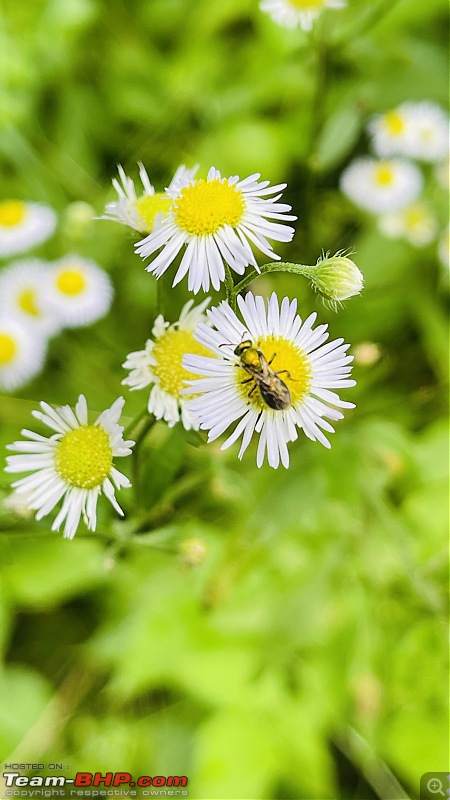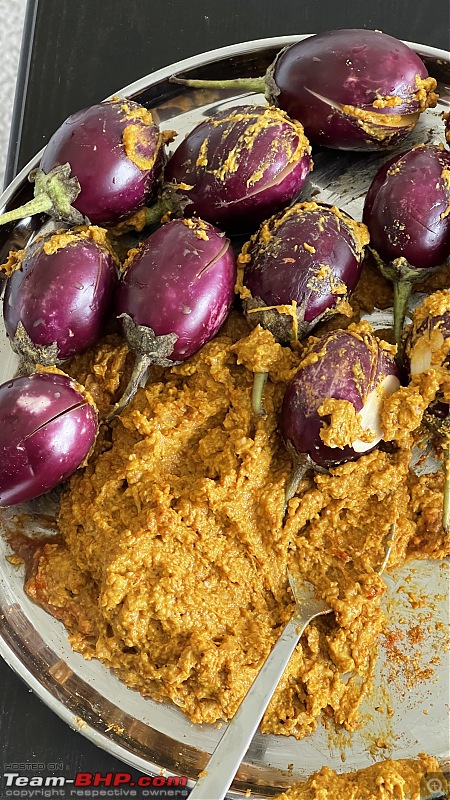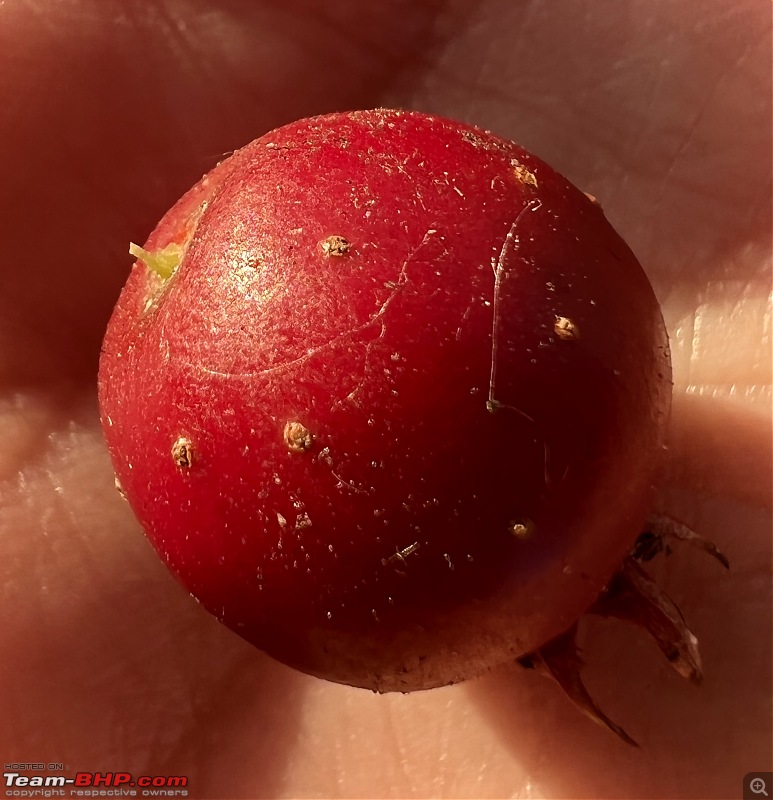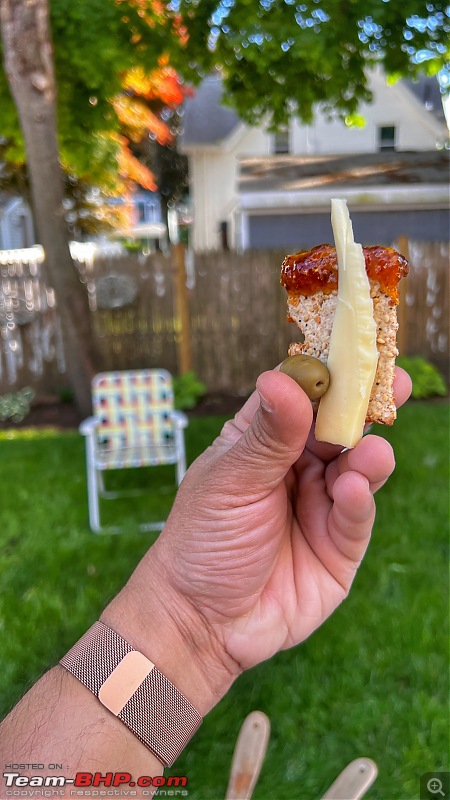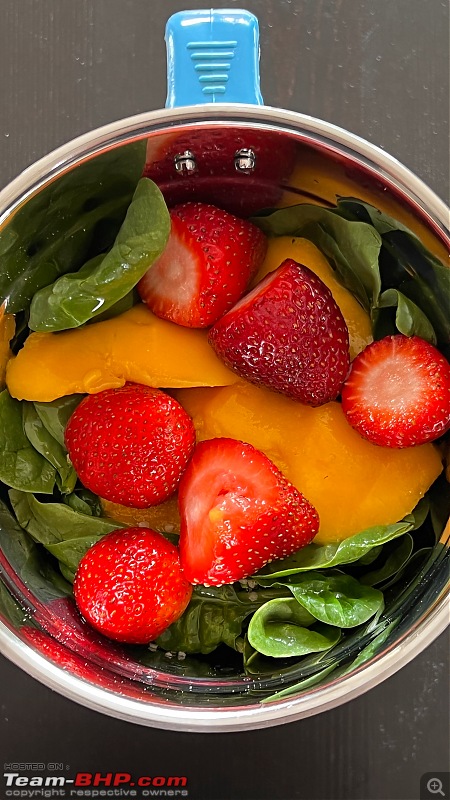Team-BHP
(
https://www.team-bhp.com/forum/)
I was never a photographer. I still don't consider myself one.
When I began riding ('96) there was no way I could snap my rides / journeys. Got my first proper P&S camera in '08, a Nikon. Didn't like it plus it had issues, so got myself a Canon, it was a very good P&S camera. But, for the past 6 or 7 years, thanks to the advancement in mobile phone camera department, the convenience of a mobile camera trumps a dedicated camera any day. I don't think I have taken out the camera, heck, don't even remember where I kept it.
For occasions / photo-shoots, would prefer a dedicated photographer with good equipment.
I have voted for full frame DSLR because I use NikonD750 with 50mm prime, 85mm prime and 24-120mm lens. I have also started to use phone for casual photos after switching to iPhone.
My primary aim to shoot is to collect memories. In hard form and not digital. Call me old school, but digital is not my taste. For me, digital is just a dump and not memories. I create photo books on yearly basis of my trips and special events so that I can go through them at leisure. The photo books also allows me to create a story out of pictures which enhances the experience if you go through them after couple of years.
Quote:
Originally Posted by mohansrides
(Post 5410214)
This poll is as predictable as it is misleading and unnecessary. Although it may not appear to be a parallel at first glance, let us put out a poll asking these two questions -[indent]1.) Would you prefer driving pleasure? Or better fuel economy?
|
I fully agree with your post and you have covered more than what I wanted to express. Photography is an art that requires patience. And I'm still learning to have that. The quality of photos and the time you take to compose a photo with a camera is no comparison to smartphones. Smartphones are also useful in different situations (not all places welcome big DSLRS) but they don't make actual cameras redundant. Smartphone photography is 80% software and 20% skill while shooting with camera is 90% skill and 10% post processing.
99% of the times, the smartphone camera fulfils all the requirements, and even exceeds especially in low light conditions.
I own an old Nikon D90, and usage has declined over the years. From being part of each outstation trip to occasionally for special trips/purposes only, especially when you need optical zoom and perspective that a phone cannot provide.
Below example can demonstrate that, both pics are taken at the very same spot in Ladakh. First one is with iPhone 12 and second with Nikon D90 with standard 18-105 lens, and iPhone or any other smartphone just cannot recreate the perspective & detail of a DSLR.
iPhone 12  Nikon D90
Nikon D90 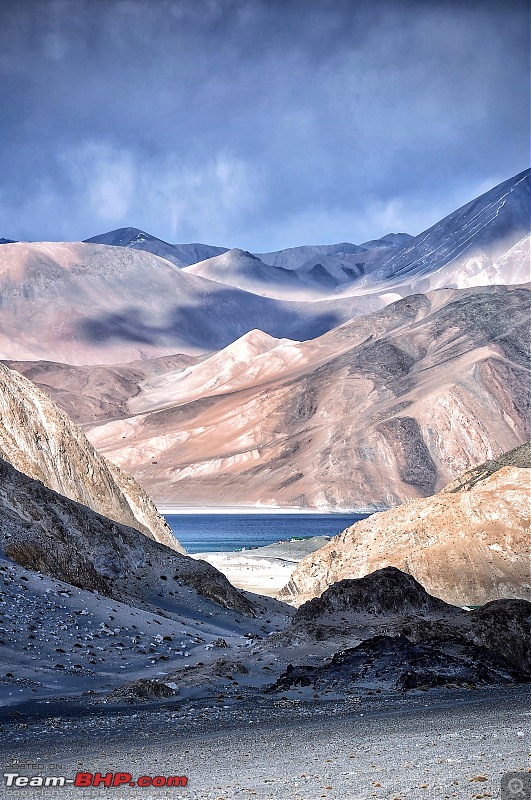
A refreshing poll. The opinions expressed indicate ,we all have an artist with in us and photography can be good media to express and share. The cell phone camera has facilitated everyone to be a photographer. The ones who want to improve their skills and widen the area may venture into better cameras and technologies. Such upgradation may be fruitful with better photographs and improved skills or the interest may die down due to vagaries of life. I am one such photographer, started photography when no cellphones were available with begged and barrowed simple film cameras upgraded to better cameras and technologies by spending most of my savings, rather my parents savings as I was not earning that time. Now I own a DSLR with few lenses and enjoy taking photos but time is luxury now and life has other priorities. Cell phone cameras have introduced everyone to photography but are justifiably limited in their capacity as a media tool.
Some of my photography attempts below
Off late smartphones have introduced everyone to good photography by providing better software capabilities and decent hardware.
That said, if you feel that smartphone has replaced your DSLR, I believe you never needed DSLR at all in first place. If we are talking about dynamic range, sensor size (for better pixel storage), large prints, specialized focal length (read macro 1:1 or super telephoto), focusing technology nothing can beat the DSLRs/Mirrorless yet. You will never find a wedding photographer capturing family portraits using smartphones. You will never find a wildlife photographer capturing wildlife using smartphones. You will never find a food photographer or a architecture photographer or a sports photographer capturing desired moment using smartphone.
To summarize, if you are professional in the field of photography or even a hobbyist in the field of wildlife photography or any photography which requires you to capture details, take prints, smartphone can never replace DSLR. If we are one of them who bought DSLR because everyone else used to buy, definitely smartphone has replaced it.
I wanted to highlight what a cellphone camera cannot do. In all the above pictures the bokeh or dimming the foreground and background will give photo an appeal and telephoto ability of DSLR with lenses is difficult with cellphone cameras. The dragon fly photo with blue background was not so attractive for naked eye as the blue colour is due to a 200 liter water drum. Our visions depth of field is too deep and we see ugly things clearly, a narrow depth of field can make things beautiful.
For me, Photography means DSLR and nothing else.
I extensively use my DSLR kits over weekdays and weekends. Of course photography means different to different people.
For most people Cell phone is ok - i.e. Capturing pics (routine, kids pic/videos, pet etc.)
Pro for cell camera:
- handy always, easy carrying, safe choice to capture pics in most situation
- Less skills needed
- Its inbuilt (no separate cost)
- No reoccurring cost (memory cars, additional lens, no protection cover/bags)
Pros for DSLR:
- Quality and post processing freedom
- Variety of experimentation possible
- Durable yet good resale value of Cameras and Lens (specially)
I use cell camera for general uses which are utilitarian in nature (i.e. documents, generic pics for family, generic pics in office etc.). But however better the cell phone camera become the image doesn't look good in bigger screens or in prints. DSLRs have edge because of bigger sensors- off course DSLR are for that use but cell has multiple use.
Cell phone cameras has made the 'point and shoot digital cameras' out of fashion i must say.
Below image: Such details are not possible with Cell phone camera.

Chose 'point & shoot'. I can see that it's a pretty unpopular choice. I use my phone for video as I find that the stabilization I get from my phone is much better. For photos, if it's a quick picture, I mostly use my phone, but if it's a picture that's intended to be a keeper, I use my Sony RX100 M3. There's something about the portraits that come out of its lens - it has way more 'character' than the flat pictures that I get from my phone. Thanks to its 1-inch sensor, excellent f/1.8 aperture, and burst mode, I also get lots of keepers when I'm shooting pictures indoors with young kids who won't still. The downside is post-processing. I shoot raw and make some minor adjustments in post, and the camera tends to get put away for a few months after the pictures are taken. The pictures always get done half a year past the day it was taken. :-P
Agree with Rudra Sen here, couldn't have said it better.
I've moved from film (Nikon F, Asahi Pentax Spotmatic etc..) to digital, starting with a P&S Canon A610, to a Canon 450D and then a Canon 5DM3 and now a Canon R6 with the trinity of f2.8 zooms, I continue using my cell phone for casual, impulsive picture taking, while the DSLR or the mirrorless are my goto equipment for anything beyond the absolutely casual.
Deliberate composition and more involved picture taking - full frame DSLRs or full frame mirrorless really can't be beat. I still cherish the film limit of 36 frames per roll, and the discipline required to shoot a frame. Still continue to have a few rolls of film stock in the family fridge and the hope of reviving film photography again. Call me old fashioned or boomer - but am still a (D)SLR kind of guy.
I have been shooting for ages ( more than 50 years). Initially B&W with range finder, and then SLR and now DSLR. Modern cell phone cameras have evolved a lot and in most cases are much more capable than an average DSLR. But :
. The light has to be good. In low light even the latest iPhone is a bit behind a DSLR with a f1.4 or f1.2 prime.
. Out of focus in a f1.8 or f1.4 has not yet been duplicated on cell phone cameras. Yes you have software but the hair disappears and the whole effect is a bit plasticky.
. Long lenses > 300mm have yet to come in phones and nothing beats a prime 300mm,400mm,500mm or 600mm prime on a full frame DSLR in terms of picture quality.
So on the whole a cell phone is a heaven sent boon for the casual photographer , especially street and travel variety (and those who have to post immidiately on facebook and instagam), but for portraits and wild life, I think DSLR still rules.
Finally as they say, it is the person behind the camera who matters not the camera, and within its shortcomings a cell phone in the hands of an expert can beat a normal photographer with a high end DSLR.
Voted for multiple options as my usage is varied as per situation.
Current gear:
1) Nikon D600 (Full Frame DSLR) - My first ever full frame. Poached it off the used section of Amazon Japan last year. It completed 10 years this month and it is an absolute monster. Pair it with an average/bad lens, it'll do great. Pair it with a decent lens, it'll blow your mind.
Using it with the legendary all-in-one 28-300mm Nikkor ED. Got it used as well (from the same source) and cost nearly as much as the body.
Excellent travel lens if you don't want to bother with swapping lenses while the moment slips away. Other lens is the 1.8D 50mm. Good at portraits and street photography but that's about it. The 28-300mm will take you places.
The D600 has to be there if I am going on a vacation. Compact with one lens but comes dangerously close to 2 kgs.The dynamic range and noise control is insane and the bokeh is excellent as well (28-300 or 50)
2) Fujifilm X T-100 (Mirrorless APS-C) - This is my primary hardware when I am recording guitar/vocal covers. Decent all-rounder and super light
3) GoPro Hero 10 - A rather recent purchase. Only for one purpose. FPS driving videos. It serves the purpose well. Only caveats? Massive file sizes and garbage battery life (solved by connecting to the car while recording)
4) iPhone 12 Mini - The photo and video quality is leaps and bounds ahead of most phone hardware (and software) but comes nowhere close to 1). This is my general purpose tool when I don't have my D600 with me or I am too lazy to pick it up
Warning! Incoming photo spam!
D600 - Sunset at Kodi Beach

D600 - Sunset at Malpe Beach

iPhone and D600 together

D600 with 50mm 1.8D

D600 - Ranikhet. Apparently the iPhone was not doing too well

X T-100 with a Tamron lens

Hero 10 - A still from a video captured today while scaling Agumbe

iPhone - At it's best. Kavaledurga Fort

D600 with 28-300mm being the big chunky mcchungus it is

D600 at 300mm - An unprocessed picture of a lad who decided to accompany me

Bottom line, phones may be able to do good stuff these days but it's the fake bokeh that makes me cringe very hard
The auto industry saying 'No replacement to displacement' applies to the sensor size in the photography world. The higher the sensor size, higher will be the 'depth of field' a.k.a Bokeh, low light performance and image quality in general.
99% of smartphone sensors are miniscule in comparison to a full frame DSLR/Mirrorless camera or even the smaller APSC. So, however nice the smart phone pics might look on the screen, they generally are heavily processed for exposure, distortion and sharpness and they look artificial especially the 'portrait' mode's fake Bokeh, which makes you throw up.
But recently the sensor sizes are getting bigger. Mi12 ultra seems to come with a 1 inch sensor. This is same as the pocket cameras like canon ixus of yesteryear and still nowhere close to the full frame/APSC. Below is a size chart to give a perspective on various sensor sizes,
My gear: An used Canon 5d mark 2 - 2 prime lenses and a zoom lens, Yashica electro 35(film)
DSLR as I know was similar to owning a luxury car back in the days. But now, it's a whole different story. Although it still is the best camera set out there, phones are threatening the very existence of the basic DSLRs. I hope they bring in the cellular feature for a camera one day he he just like phones got bigger cameras rl: just for fun!
I totally agree with post #44. I am not quoting because it is very long, and truncating a post on mobile phone takes a long time. The various points made by mohansrides are right on target, in particular about enthusiasts, whether automotive or photography. For a forum about automobiles, the kind of posts we see these days on automobiles, traffic, road safety, etc. are at layman level.
Mobile phone camera photography is all about the software doing the job for you. There is very little engagement and involvement required from you. I like the control that a proper camera offers: the ability to choose your own aperture and shutter speed, exposure lock and compose your shot, focus lock and compose, lock exposure one portion of the scene and then lock focus on another part and then recompose, etc. I don't own a flagship mobile phone but I doubt a mobile phone can do all that. Optical zoom and real depth of field are also something that mobile phone cameras can't offer.
Another important thing for me is sensor size: large sensor and it's light gathering capacity, not some software jugglery providing me an image that it thinks I want.
To me the only advantage of a mobile phone camera is the convenience it offers, to be able to take impromptu shots with family and friends, mostly for social media consumption.
| All times are GMT +5.5. The time now is 16:43. | |














